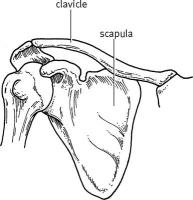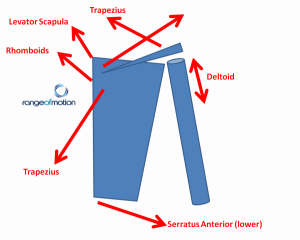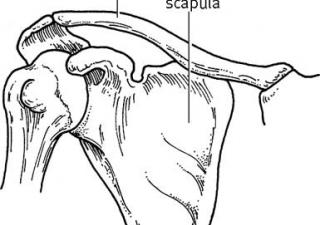Winging Shoulderblades’. ‘Unstable Scapulae’. Common problems. But what are they, and how can they be fixed?

One of the primary functions of the scapulae (shoulderblades) is to provide a stable base from which to create movement in the upper body. The shoulder is a complex joint with multiple articulations (between the spine, scapulae and humerus). During movement of the arm, a set process known as ‘scapulo-humeral rhythm’ occurs (below).

Basically, the above image shows four stages of shoulder movement:
- An initial movement of the gleno-humeral joint (where the shoulder blade joins the humerus).
- A movement of both the gleno-humeral and the scapulo-thoracic joint (where the shoulder blade joins the spine).
- A secondary movementof the gleno-humeral joint.
- A final movement of the scapulo-thoracic joint.
The correct order of movement allows for a healthy joint, and maximum force generation.
However, as much as the scapulae play a major role in creating movement – they play an even more important role in stabilising, or resisting movement. In ‘The Core – How Should it be Trained‘, I discussed a similar concept:
“The role of these muscles is in midline stabilisation. The key term here is ‘stabilisation’. They have not evolved to create movement, but to resist movement. Their function is to keep the spine neutral, the position where the body is most protected from damage.”
Specific to the scapulae, a whole bunch of muscles play this stability role:

And this brings us to the crux of this post. How can we create stability through the scapulae to more efficiently create strong and safe movement – particularly overhead? The good news is that similar exercises can be completed to improve both the movement creating and resisting functions of the scapulae. Instability with a weight overhead? Shoulder pain? Unable to engage ‘active shoulders’ with presses, snatches and overhead squats? Try these exercises as often as possible. They are designed to target all the muscles in the above diagram – creating stable, strong and healthy upper body movement.





